Test management is the process of taking a project's requirements, building a test plan, writing the tests, planning the test activities and capturing the results. Test management tools that provide these capabilities, ease the testing process drastically. One such test management tool is Zephyr for JIRA.
Zephyr is an integrated plugin which provides the test management capabilities for projects in JIRA. Let's discover Zephyr for JIRA (cloud version) as a test management tool.
How to Integrate Zephyr with JIRA?
First, we need to install Zephyr for JIRA plugin and then add the issue type ‘test’ to the project.
- Log in as the Administrator on your JIRA Cloud instance
- Jira Settings - Find Apps/Add-ons - Search ‘Zephyr for JIRA’ - Install
- Project Settings - Issue Types - Add ‘Test’ type to project

Zephyr for Test Management
1. Creating a Test Cycle
A test cycle is a container for test cases. It allows the test cases to be grouped logically and executed in a structured fashion.
First, we need to create a test cycle using below steps:
- Click on Zephyr - ‘Cycle Summary’
- Click on the ‘+’ / ‘Create New Test Cycle’ button at the top of the folder menu
- Complete below fields to create a new test cycle:
- Version - Select applicable version of the project
- Name - Name of the test cycle
- Description - Description of the test cycle
- Build - Optional. Used to build details
- Environment - Environment on which test case is to be executed
- From - Start date of the test cycle
- To - End date of the test cycle
- Click on the ‘Save’ button
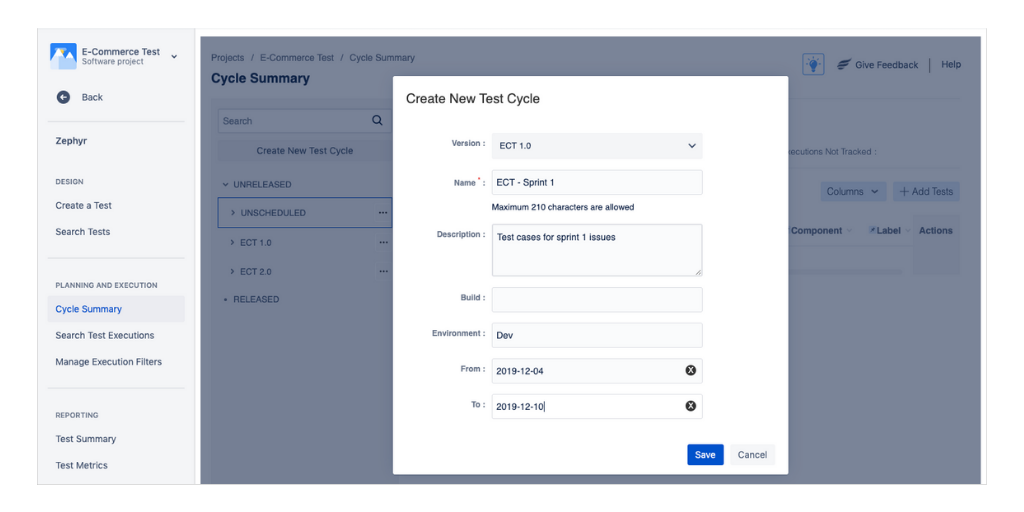
2. Creating Test
A test case is a set of actions executed to verify a particular feature or functionality of the software application. To create a test case in Zephyr, first, we need to create an issue with type ‘Test’ and then add test steps to it.
Step 1: Creating a Test
- Click on ‘+’ of the main menu
- Select the desired project under ‘Project’ dropdown
- Select ‘Test’ as an issue type
- Enter below details
Test Summary - Title of the test cases. Mandatory field.
Test Description - Description of the test case
Components - Select component specific to the project or feature
Fix Version - Select fix version/Release of the project
Priority - Select the priority of the test case
Assign To - Name of the user responsible for executing the test cases
Sprint - Sprint of the test case
Epic Link/Story links - Epic/Story ID for which test cases is been created
Attachments - Attach evidence/reference document
- Click on the ‘Create’ button
Step 2: Adding test steps to the Test
- Open the created test in edit mode
- Go to ‘Test Details’ section
- Add ‘Test Step’, ‘Test Data’ and ‘Expected Result’
- Test Detail Features -
Edit - Click on the cell - Modify - Click outside the cell
Clone - Click on the ‘Clone’ button available under the ‘Actions’ column
Delete - Click on ‘Delete’ button available under ‘Actions’ column
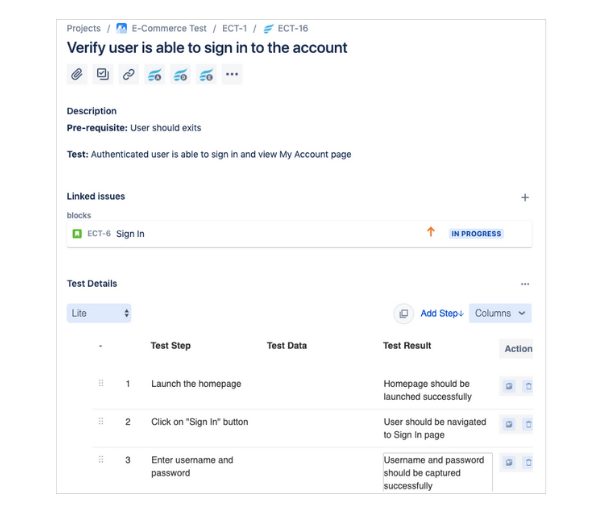
3. Adding Tests to Test Cycle
We can add tests to test cycle in two ways:
- From ‘Test Cycle Summary’ page
- Select the Test Cycle
- Click on the ‘Add Tests’ button
- Three ways to add tests:
Individually - Using Test ID
Via Search Filter - Using existing Search Filter
Another Cycle - Using Another test cycle
- Assign these tests by selecting a name under ‘Assign To’ dropdown
- Click on the ‘Save’ button
- From ‘Test Case View’ page
- Open the Test Case
- Click on ‘...’
- Select ‘Add to Test Cycle(s)’ option
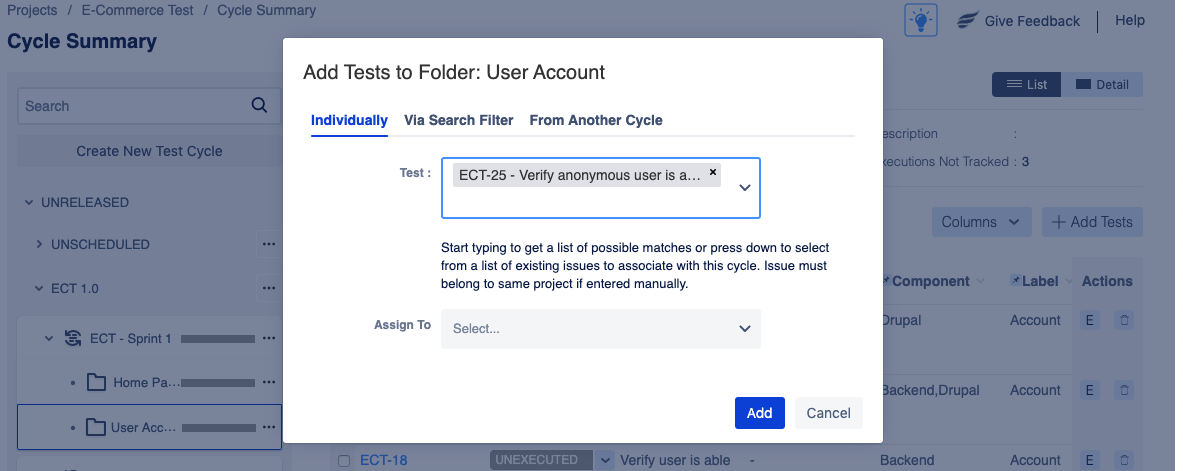
3. Executing Tests
Test Execution is the process of executing the test cases in a test cycle and comparing the expected and actual results. After adding tests to the test cycle, we need to execute them. We can execute the test in Zephyr using either of the below ways:
- From ‘Test Cycle Summary’ page
- Select the ‘Test Cycle’
- Click on the ‘E’ button available against each test case
- This will open up the ‘Test Execution’ page for the respective test
- Fill in the ‘Pass/Fail’ details as applicable
- From ‘Test Case View’ page
- Open the Test Case
- Go to Test Execution section
- Click on the ‘E’ button available against each test case
- This will open up the Test Execution page for the respective test
- Fill in the details as applicable
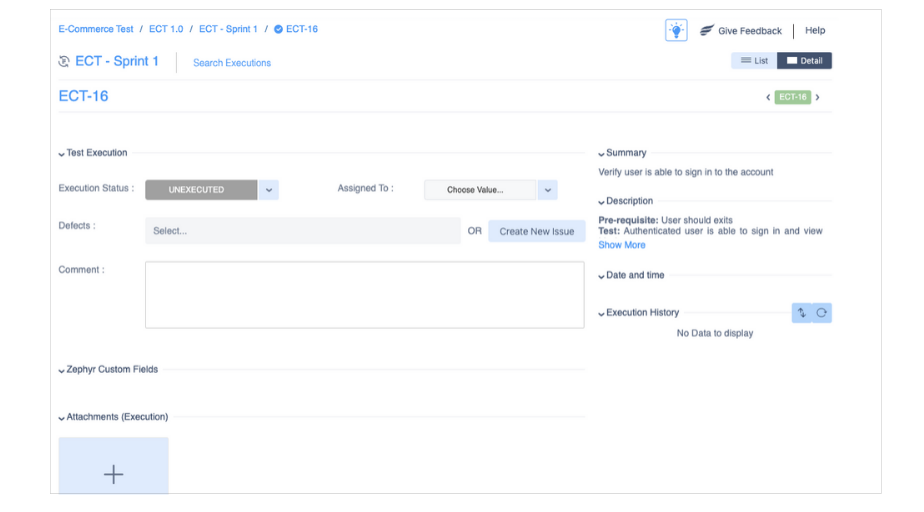
4. Raising and Linking Bug
- Open the ‘Test Execution’ page of the failed test case
- Click on ‘Create New Issue’ button
- Fill in the details as applicable
Summary - Title of the bug
Reporter - User reporting the bug/issue
Description - Description of the bug (Steps to reproduce, Actual/Expected result)
Priority - Select Priority of the bug to get fixed
Linked Issues - Select test/issues related to this bug
Assign To - Select user who will work to fix this issue
- Save the issue
- New issue created will be linked to the test case

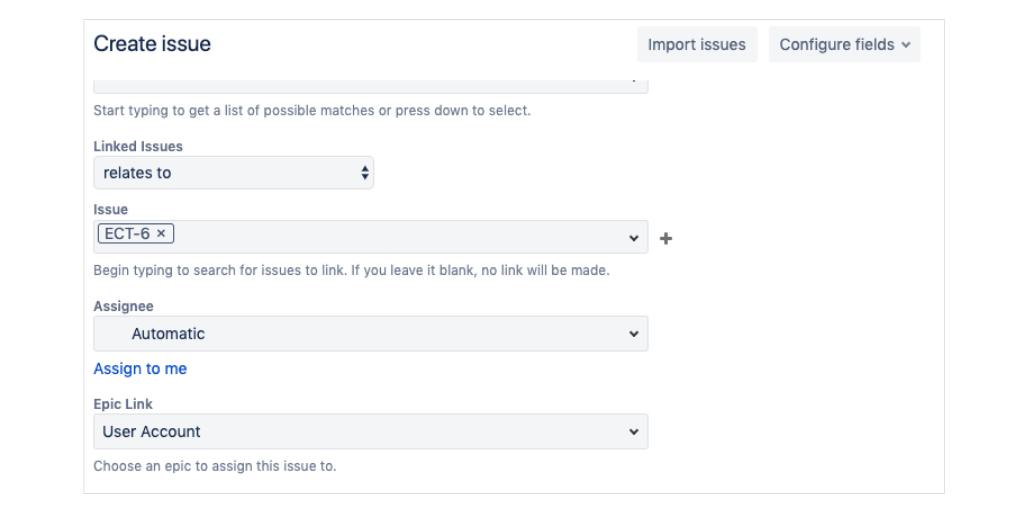
5. Tracking Testing Progress
There are several ways to track testing progress in Zephyr.
- Test Summary
The ‘Test Summary’ page gives an organized view of all the tests for a particular project, broken down by Versions, Components, and Labels.
- Traceability Matrix:
Traceability matrix provides the ability to map requirements to defects or vice-versa. Zephyr provides two traceability matrices:
1. Requirements to Defects: Generates full traceability report from Requirements - Tests - Test Executions - Defects.
2. Defects to Requirements: Generates full traceability report from Defects - Test Executions - Tests - Requirements.
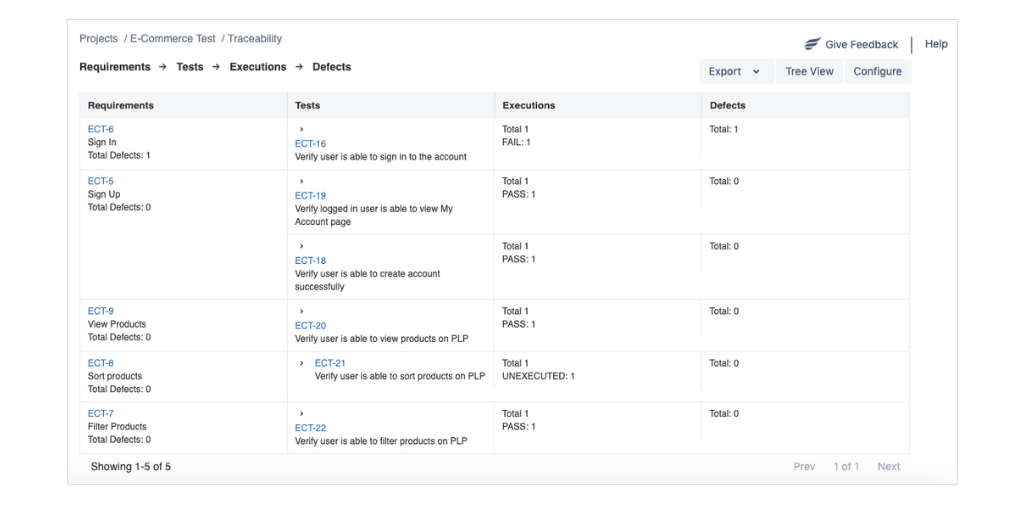
- Test Metrics
Zephyr automatically tracks below test metrics for the project/version:
- Daily Test Execution Progress, by status
- Test Executions by Test Cycle
- Test Executions by Tester
- Execution List
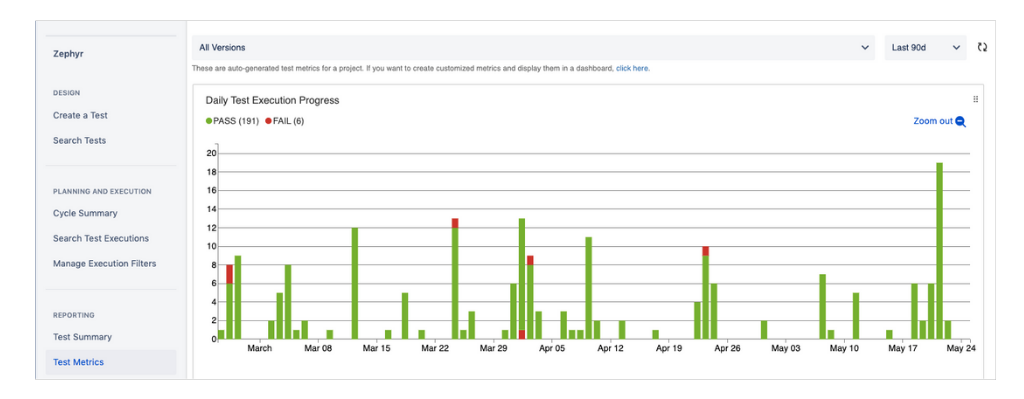
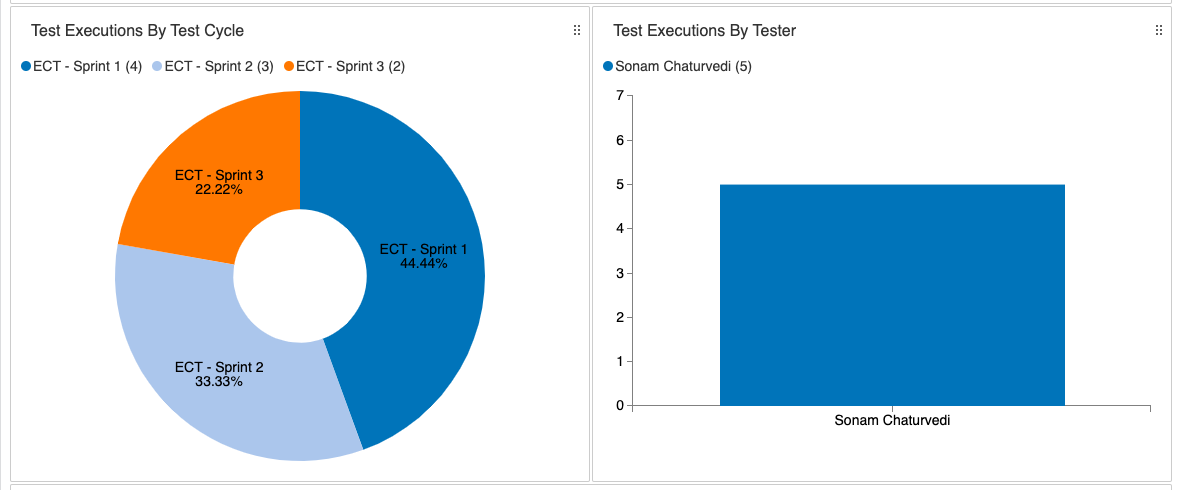
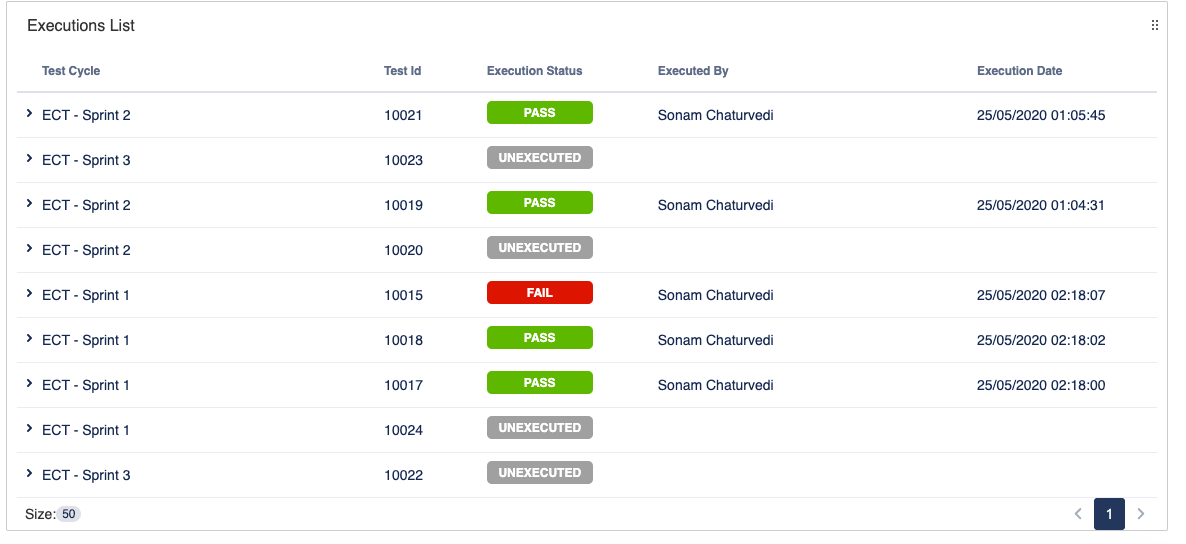
Pros and Cons of Zephyr
Pros:
- Better traceability with the linkage between stories, test cases and bugs in the test cycles.
- Graphical representation of the results.
- UI look and feel is the same as JIRA’s
- Test cases can be exported to word, excel formats.
- Test case review process possible through Agile Board.
- Multiple test iterations with multiple cycles can be created.
- Possible to create customized filters.
Cons:
- Importing existing test cases from excel is not easy and one has to use some external add-on for that.
- Test Case writing in Zephyr (browser) compared to the Excel sheet is tedious.
- Test result import not possible.
- Does not integrate with other applications such as Rally or TFS
Thanks for reading! Hope this gives you an overview of how to integrate Zephyr with JIRA and use test management capabilities in any JIRA project. Part 2 of this blog series Zephyr for JIRA: Features explores some quick and handy features of Zephyr. Stay tuned!

